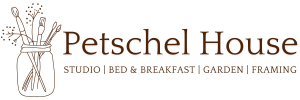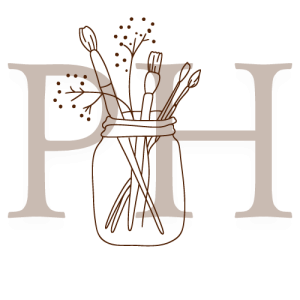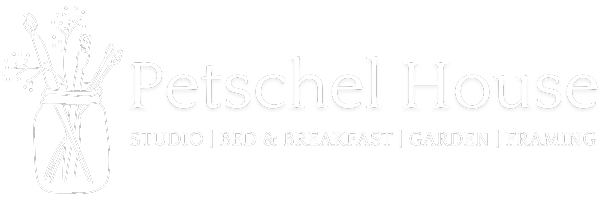By Jenni Mitchell
A Visual Encounter of Salt, Ice and Flesh using Photography and Painting
Introducing Jenni Mitchell
Jenni Mitchell is a visual artist who has been working with wild landscapes for many years, holding numerous solo and group exhibitions of her work around Australia and, more recently, Mongolia.
Since 1982 Jenni has been working on a series of Australian Poets’ portraits, completing more than 100 portraits painted from life.
Her most recent project has been an expedition to Antarctica as a recipient of a Humanities Fellowship from the Australian Antarctic Division. The works from this trip have been exhibited at Montsalvat, Hobart, Parliament House in Canberra and, next year, at Dickerson Gallery and the Hamilton Regional Gallery. From this body of work, Jenni has published her first book, To the Ice: Images from the Antarctic as a visual and poetic journal. She has recently completed a Masters of Visual Arts at Monash University.
Abstract
Using painting, photography and text I started this project by documenting the landscape layers of the SALT & ICE, using Lake Eyre in South Australia and the
Antarctic, forming visual comparisons of these two opposing deserts. Drawing parallels of the transcendent state, these sublime landscapes can create in the human being, I have also begun to look inside the human body through observing the procedure of open heart surgery at a Melbourne hospital. By visually recording the layers of skin, muscle and body tissue and the layers of the ice and salt, a range of questions arise. Within this context is the search for the metaphysical soul of the landscape and the soul of the person – can it be found, touched, observed? What feelings are stirred within us (me) being immersed in wildness and extreme locations?
This work is a personal journey and, through journal writing, I have recorded the effects and range of emotional experiences encountered during the preparation and travelling into unknown places. These places include the ‘otherness’ – a super awareness= of being confronted with the exquisite beauty of a truly wild place – and the potential for shock at being confronted by the opening up of a human body. How mental detachment becomes a form of protection for the artist is also explored. Emotionally protected by the sketch book and camera, this manifests in images that portray the raw beauty of salt lakes and desert ice alongside those of an opened the chest cavity and exposed layers of flesh.
Sublime Journeys: Landscape and the Human Body
It took a while to realise I was experiencing ‘Art and Pain’ while putting this piece of writing together. You know the feeling – tidy the desk, pull out weeds, make another coffee. Then there was the pain in my hand and shoulders – the RSI that had developed from years of standing before an easel and sitting incorrectly at the computer.

The more I began to reflect on my working methodology the more I began to realise there is an unconscious acceptance of pain as a way of the life for an artist. It is living on an emotional edge – the highs and lows the artist experiences and, perhaps, subconsciously seeks to produce work are astounding. I rejected the notion of the mad or self-abusive artist as simply self-indulgent and definitely not part of my psyche. I thought my work was pretty straight and I level headed,
normal. I would methodically organise painting trips into the desert and for months planned the journey to the Antarctic. I carefully primed myself to watch open-heart surgery to avoid passing out at the sight of blood. I don’t ski; I don’t like the cold or the heat and I don’t like blood.
The images presented here are from a work-in-progress begun three years ago as a Masters topic that compared the visual similarities of ice and salt – Lake Eyre and the Antarctic. Exploring the images of the whiteness from a macro and micro perspective, I began to blend the images into abstract forms where the desert layers of salt and ice would merge to become indistinguishable. Both landscapes are technically deserts, having virtually no rainfall. They are extreme in temperatures, with Lake Eyre rising to a sweltering 50 degrees and the Antarctic freeze in winter to below -40.
Lake Eyre lies in the northern region of South Australia and represents the heart centre of Australia. It is a dazzling white salt crystal jewel, many times greater in size than Port Phillip Bay. On rare occasions it fills with water. Far from the minds of our coast dwelling society, it is forgotten until there is a flood, until the lake fills and the tourists flock to her side in awe.
The journey is so much part of the experience. Leaving the city there is a slow emersion into the landscape. As fence lines fade the country opens up and the mind shifts. Everyday thoughts drop off and simple, fundamental considerations become important such as where to camp, will the ground be soft and what is for dinner? As the journey deepens into the landscape the sky widens and brightens. Morning and evening light is more vibrant and the Milky Way appears closer to earth. The temperature drops at night and rises in the day and a fine layer of dust infiltrates every millimetre of the car, clothing and skin. It doesn’t matter. You are becoming part of the landscape.
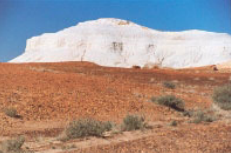
The drive out to the lake from the camp seemed to take forever as we traversed sand hill after sand hill and dug the vehicles out of the deep sand. Then, over the last sand hill, was the sea. This was the inland sea the explorers had been looking for. My first impression was not spectacular. It was just like the beach –sandy dunes and a sparkling sea – and I wondered if it was worth the five days hard travel.
Suddenly something else took over. It was as if a light had been switched on – the sea, the sky, the whole scene before me appeared to shimmer with iridescence. I was completely seduced. The water was some distance from the shore, as if the tide was out and there was a layer of grey silt with a white lace salt edge. Called as if by a mysterious siren I attempted to walk out to the water. But it was hopeless – my shoes easily broke through the delicate crust into the salty sludge.
The colours of an apricot dawn and the evening mauve sky through to the intensity of the falling sun fire were stunning when mirrored into the lake. Its vibrancy defying the camera and impossible to reproduce on canvas. This is part of the artists’ pain – the desire to capture that ‘otherness’, the elusive spell of the unobtainable landscape.
What is it that drives the artist to want to capture it?
Every trip to Lake Eyre has been unique and each one leaves me with even less understanding. Mostly the lake has been dry and lies in the desert as an endless
expanse of dazzling salt. Without eye protection you can suffer snow blindness and the wind can be fiercely icy-cold and sting exposed skin. I first drew parallels between the salt and ice one winter while walking on the freezing desert salt crust.
Roma Delhunty is a writer who assisted her scientist husband John in many of his research trips on Lake Eyre. She holds a similar view when she writes in her book ‘The Spell of Lake Eyre’: Salt crystals seem to grow very similarly to ice crystals; so much so that everyone who has worked on the salt-crust automatically calls it ice. Most people know so much more about ice and snow sheets than salt sheets, and this, together with its looking so much like ice and snow, helps it to imprint itself on the mind as ice – no matter how hard one tries to think of it as salt, it still remains as ice in one’s thoughts.
The surface patterns changed across the lake. In places it appeared as if a sea had been suspended in a frozen moment – the crust, wave-like ripples of hardened salt several inches high. Then it would change to delicate sugar-frosted lacy rings, like pan-cake ice of the Antarctic. An area of hollow ceramic shell-like mounds could suddenly appear.
Insects, twigs and animals become trapped are found encased in salt crystals, perfectly preserved. I once found a snake completely encrusted in salt. I broke the salt crust and the flesh was eerily life like.
When we walked on to the surface from the shore on our last visit, we realised how easily we became disorientated and lost our sense of direction. We thought we had noted a shrub on the shore as a marker and, as we looked around, realised the cliffs and sand hills and shrubs began to look the same. A mistaken few degrees could put us several kilometres from our vehicle. The small bushes and debris blown on to the lake’s surface became magnified by the brightness of white light and appeared to move away and back through the heat haze. It was uncanny, standing completely surrounded by the ice whiteness. We became tired and experienced headaches while still being compelled to walk further towards the dazzling horizon. When we lay down to rest on the salt the earth began to spin.
I sailed across the lake in 1987 with a documentary film team in a catamaran and dingy. The morning we left, the first two hours was spent pushing the boats through black salty sludge. Chunks of sharp salt cut our skin. It was a painful experience even back then.
I remembered my earlier vision of walking to the centre of the lake to dissolve. What I had imagined could have once been a romantic death only and never dared to believe I could be in reality be in the centre of the lake. At this time I also recalled a large painting I had made years earlier after two friends had died – a seascape in which the horizon was obscured by a sublime mist of pastel blue, pink and turquoise light. I did not see this image again until I was on the southern ocean. These were the colours I imagine represent death; the moving from one layer of experience to another.
During the summer of 2002/3, I sailed to Casey Station as a recipient of the Australian Antarctic Division’s Humanities program, on board the Polar Bird, an ice-strengthened cargo ship.
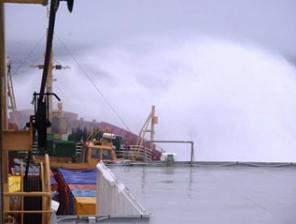
I was sailing away from the familiar. Instead, like to the desert, fence lines and the earth flattening, here the air became chillier and the sea mountainous. Instead of kangaroos, emus and eagles the ship was accompanied by albatross, petrels and whales.
I had not expected the journey to become such a focus. As the days lengthened and sleep shortened, I became inspired. My bridge studio continually changed as the Southern Ocean grew wilder and my chair and materials had to be strapped down with the increasing pitch and roll.
To look into the tremendous power of the ocean with it’s gigantic swell, and to realise you were just one mistaken slip from death was humbling. Some days the mist would obscure the horizon and the ocean would become still. And then, through the fog would loom a towering mountain of ice.
Through razor sharp cold, utterly astounding, humbling images followed one another.
Christmas Day and there was snow at sea and myriad ice-berg sculptures lit internally by a mysterious electric blue glow – I was in tears with emotion. The exquisite beauty was almost too painful. How could I as an artist want more?
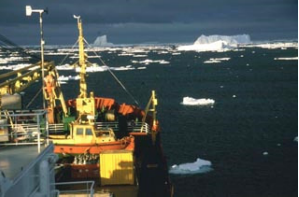
Parallels with Lake Eyre became evident once we entered the sea ice – ice whiteness to the edge of the horizon. Salt towers became ice mountains. And then there was the silence. From the numerous working sketches and photographs I began a series of large studio oil paintings. At sea I had become a highly sensitive emotional receptor – the challenge now was to portray the experiences.
Lake Eyre and the Antarctic have such a powerful presence. There is a connectedness to something grander than just a piece of dirt. It may be that these places are essentially unobtainable – perhaps human beings are not supposed to be there.
*
The human body is another element of connected landscape. By observing Open Heart surgery at a Melbourne hospital I observed a number of parallels to the salt and ice.
This landscape was defined by room size with a myriad of spaghetti tubes, green draped tables of instruments and space-age beeping equipment. When the patient arrived on a trolley and I realised this was for real.
Behind my camera and with a curious mind, I had employed a protective detachment between the potentially grotesque visual experience taking place and my consciousness. Instead of passing out I, was alert. When invited to step closer to photograph the detail of the operation, for a moment the excitement of driving over the last sand hill and seeing the whiteness of Lake Eyre flashed through my mind.
Before me was a set of metal clamps holding the chest open and a beautiful pulsating organ. Looking into the chest cavity I saw the parallel layering of flesh as I had seen in the layers of the cliffs edging Lake Eyre. Instead of a white salt heart, here was a heaving beating human organ. Why the colour? The yellow fat, the lightness and crazing of the lungs, the dark plum? The human heart was not supposed to be exposed to the air. We are not necessarily meant to see this.
Was this the essential person? Where was the soul? Where did this life force come from? I realised the answer was not in the cavity – it was just an organ. As miraculous as it appeared, there was something missing. Like the landscape and the emotions it evokes, I was still looking for the ‘otherness’, the fundamental essence of the landscape and the person. I thought about the patient – his head beneath a screen, as if he didn’t exist. It was just an organ under repair – the owner was outside this experience. There was no pain at this time for the patient – all the emotions and potential for anguish were with the medical team – it was a different paradigm.
The life force seemed elusive. Firstly, it was given over to the anaesthetist to keep the patient alive with a number of machines monitoring consciousness, oxygen and blood flow. As the operation progressed, the heart and lung machine took over and kept the essence of the patient alive. When the operation was completed, a moment of quiet descended in the theatre as the life was returned under the patient’s control and a silent relief exuded as the heart began to beat unassisted.
At this point, the operation has to be completed in reverse – the arteries and the layers joined to bury the heart into the body.
Others have linked the Salt and Ice, the deserts, the landscape and the heart. Through the arts, we find the salt heart, the ice heart, the heart of a nation, the inner landscape, a pillar of salt and the salt of the earth. Salt to the alchemist is a fundamental element that flows through the landscape and the body. These images can be connected by many different layers. There is the visual, the emotional and the physical. They can be linked through their extremities –
paralleled by their opposing forces – and similarities.
The artist has to work as a sensitive receptor, empathetically, and at the same time, employ emotional detachment to contain the information – as if each element has to be stirred in the body’s cauldron. There is a correlation between working on the physical and mental edge of wild nature and the collection of the material that creates the working passion for visual experience.
As I mentioned earlier, this is a work in progress. I feel I am very much at the beginning of paralleling the unique experiences, following myself through my own journey into the concept of understanding the centre.
I work with a variety of mediums – paint, photography, video and text, often simultaneously in the attempt to find the best method to communicate and demystify my subject. Through my art practice and working with nature it is obvious there is a connectedness between everything organic and that art is a powerful language for sharing the experience.
